Know more about your batteries Spektrum Smart Technology
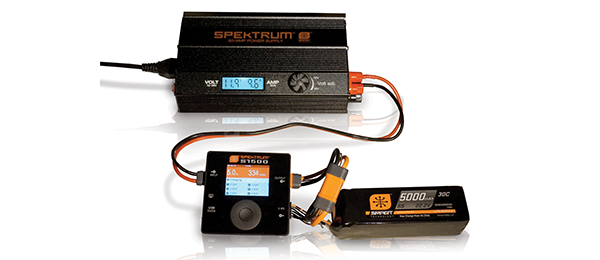
Written by Jay Smith Spektrum Smart Technology As seen in the April 2020 issue of Model Aviation.
Bonus Video
At A Glance
S1500 DC Smart Charger Specifications
Battery balance connector: JST-XH
Battery temperature monitoring: Yes (temperature sensor included)
Battery type: 1S to 6S LiPo, LiFe, LiHv; 1C to 16C NiMH, NiCd, Pb
Circuit breaker: Yes
Cooling method: Fan
Display: 2.4-inch 320 x 320 IPS LCD
Height: 1.9 inch
Input voltage: 8 to 30 volts
Integrated balancing: Yes (internal balancer and external adapter)
Length: 3.7 inches
Low-input voltage protection: Yes
Material: Plastic case
Maximum charge rate: 26.1 volts, 20 amps
Model memory: Smart ID
Output connector: IC3 (compatible with EC3)
Over-current protection: Yes
PC connectivity: Yes (USB, external adapter required)
PC required: No
Peak detection: Yes
Reverse polarity protection: Yes
Safety timer: Yes
Selectable charge rate: Yes (incremental [0.1-amp increments])
Short-circuit protection: Yes
Software updates: Yes (via USB port)
Thermal protection: Yes
Type: DC-powered Smart Battery charger
Weight: 8.5 ounces
Width: 3.8 inches
Price: $119.99
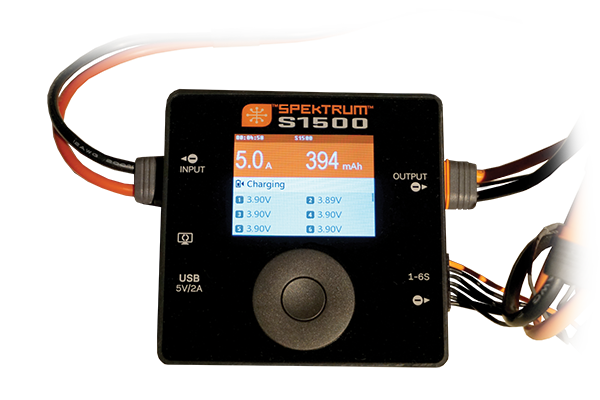
Smart 30-Amp 540-Watt Power Supply Specifications
Type-switching DC power supply
Input voltage AC: 100 to 240 volt
Input AC frequency: 50 to 60 Hz
Input fuse: 10 amps
Output voltage: 12 to 18 volts DC +/- 0.5 volts
USB supply: (Two) 5 volt (1 amp total)
Maximum current: 30 amps at 540 watts (total
Output display voltage and current
Overload protection: ≤ 31 amps, 500 MS
Output voltage ripple: < 150 megavolts
Power efficiency: 89%
Over-temperature protection: <65˚C (0-104˚F)
Cooling: Two automatic fans
Output connectors: (Two pair) bullet/banana plug sockets
Weight: 3.57 pounds
Price: $109.99
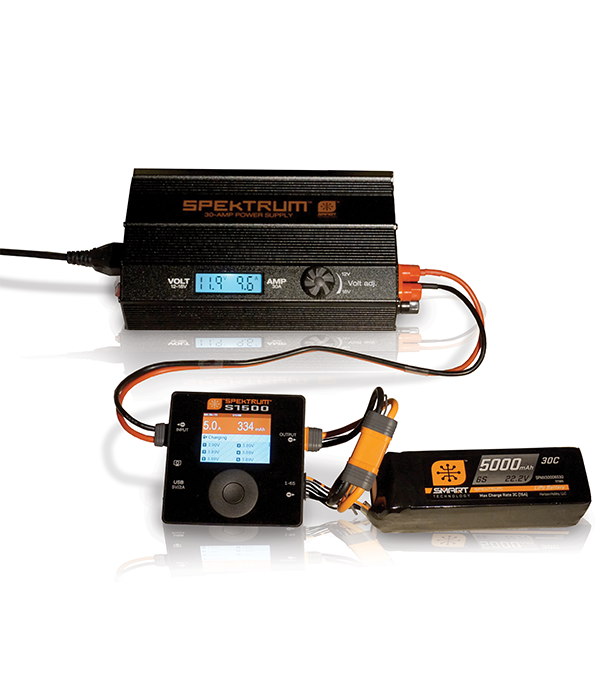
Spektrum XBC100 Smart Battery Checker and Servo Driver Specifications
Battery balance connector: Included for testing LiPo batteries
Battery temperature monitoring: Yes
Battery type: 1S to 8S lithium; 1- to 10-cell NiCd/NiMH
Balancing cell accuracy: <0.005 volts
Connector type: IC3
LCD: Yes
Servos: Also tests servos without having to connect a radio and receiver
Voltage: +/-0.005 volts at 4.2-volts measurement accuracy
Voltage range: 5 to 36 volts
Price: $39.99
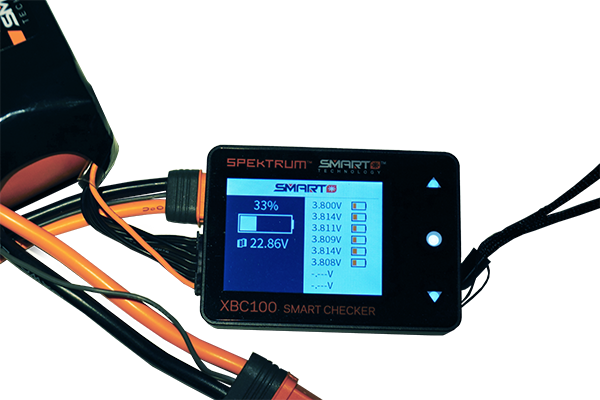
When thinking ABOUT what is classified as a “smart” device, likely a modern cellphone is what comes to mind for most people. However, TVs, microwaves, refrigerators, and other devices that can connect to the internet or other networks are also given that designation. Some feel that being connected doesn’t necessarily mean a device is “smart,” but it must also provide some type of useable benefit.
As someone who has adopted smart products at home, such as speakers, smoke detectors, and a thermostat, I was excited and eager to learn more about Spektrum Smart technology that would allow me access to more information about the batteries and the devices to which they are connected.
LiPo batteries with Spektrum Smart technology have an installed microchip on every battery that feeds information through a data cable in the new IC3 and IC5 connectors. These batteries store unique data such as the chemistry type, cycle count, charge rate, error log, and more.
Most intriguing to me was the Smart Discharge feature on the batteries. LiPo batteries will perform better if kept at a storage charge when not in use. Leaving LiPos fully charged for an extended period of time will increase resistance and reduce capacity.
When programmed with a Spektrum Smart Charger, Smart Batteries will automatically discharge to your predetermined storage voltage when they are left to rest for a time period that you choose, between 12 and 240 hours. Although it is a low discharge current of approximately 100 mAh, this unique feature results in longer battery life expectancy and better performance throughout the life of the pack.
Another simple but exciting feature about the Smart Batteries is that the orange IC3/IC5 connectors are much easier to unplug than the older blue EC3/EC5 connectors. In my testing, my thumbs and index fingers have been much happier with connecting—and especially disconnecting—the new batteries.
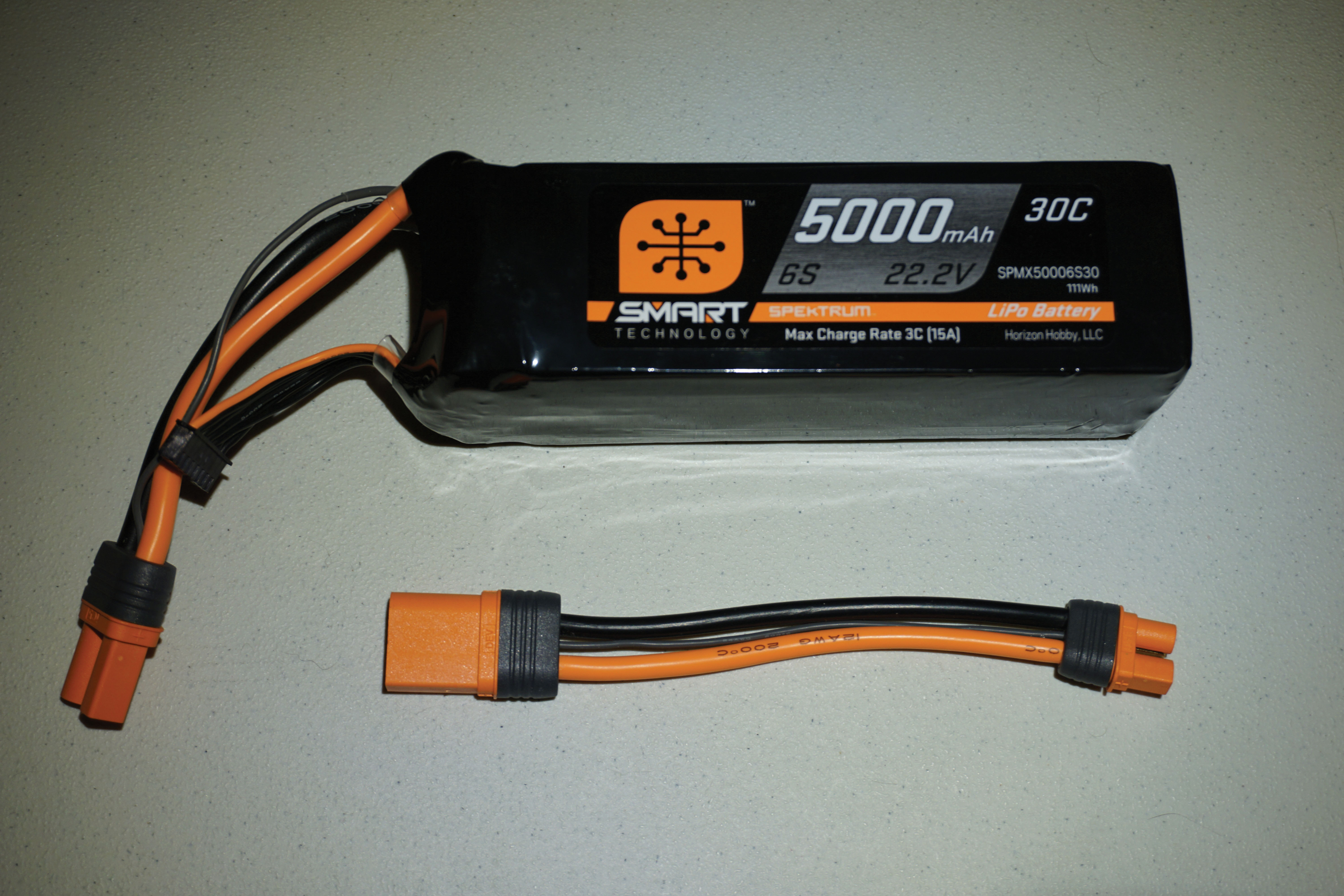
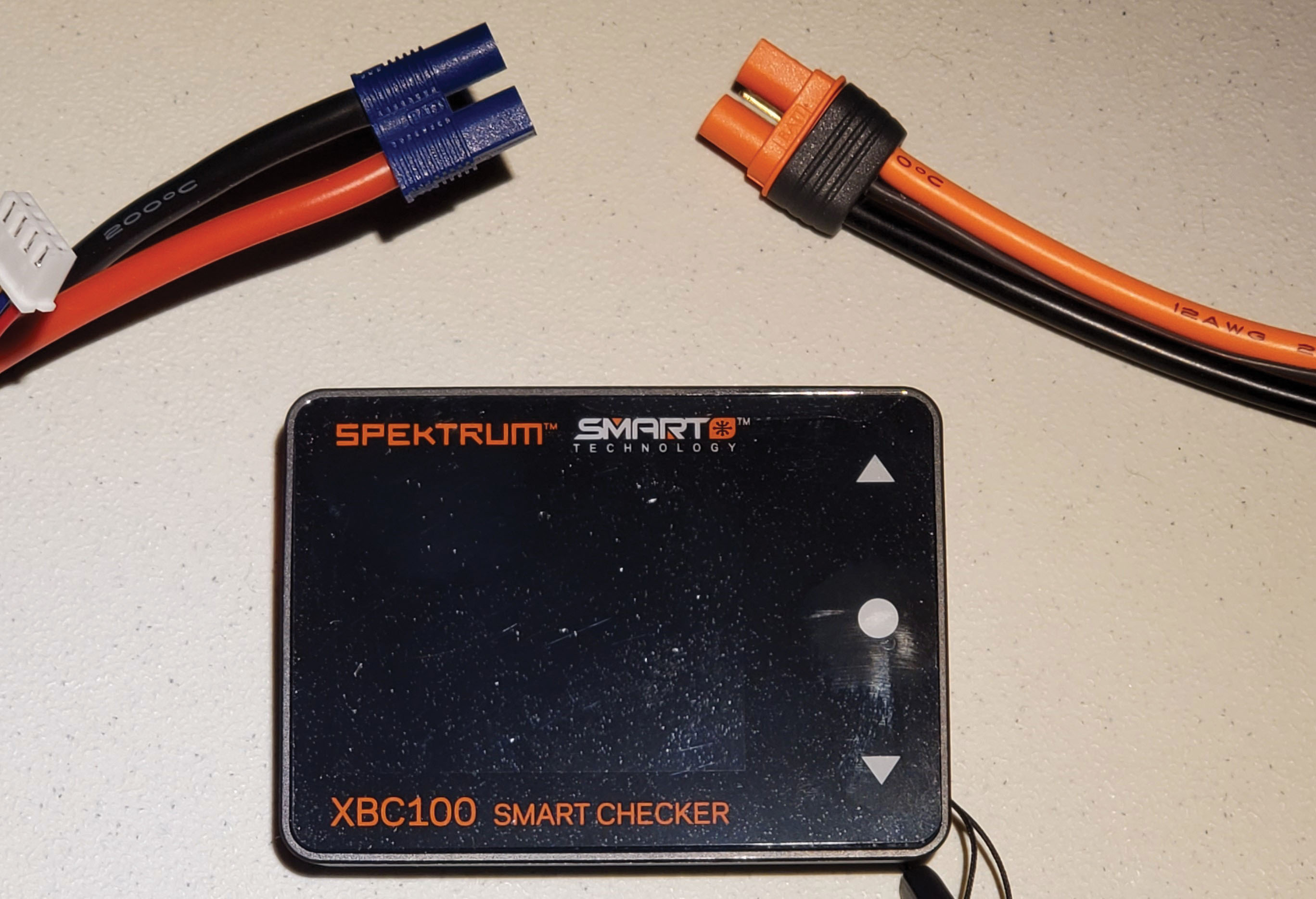
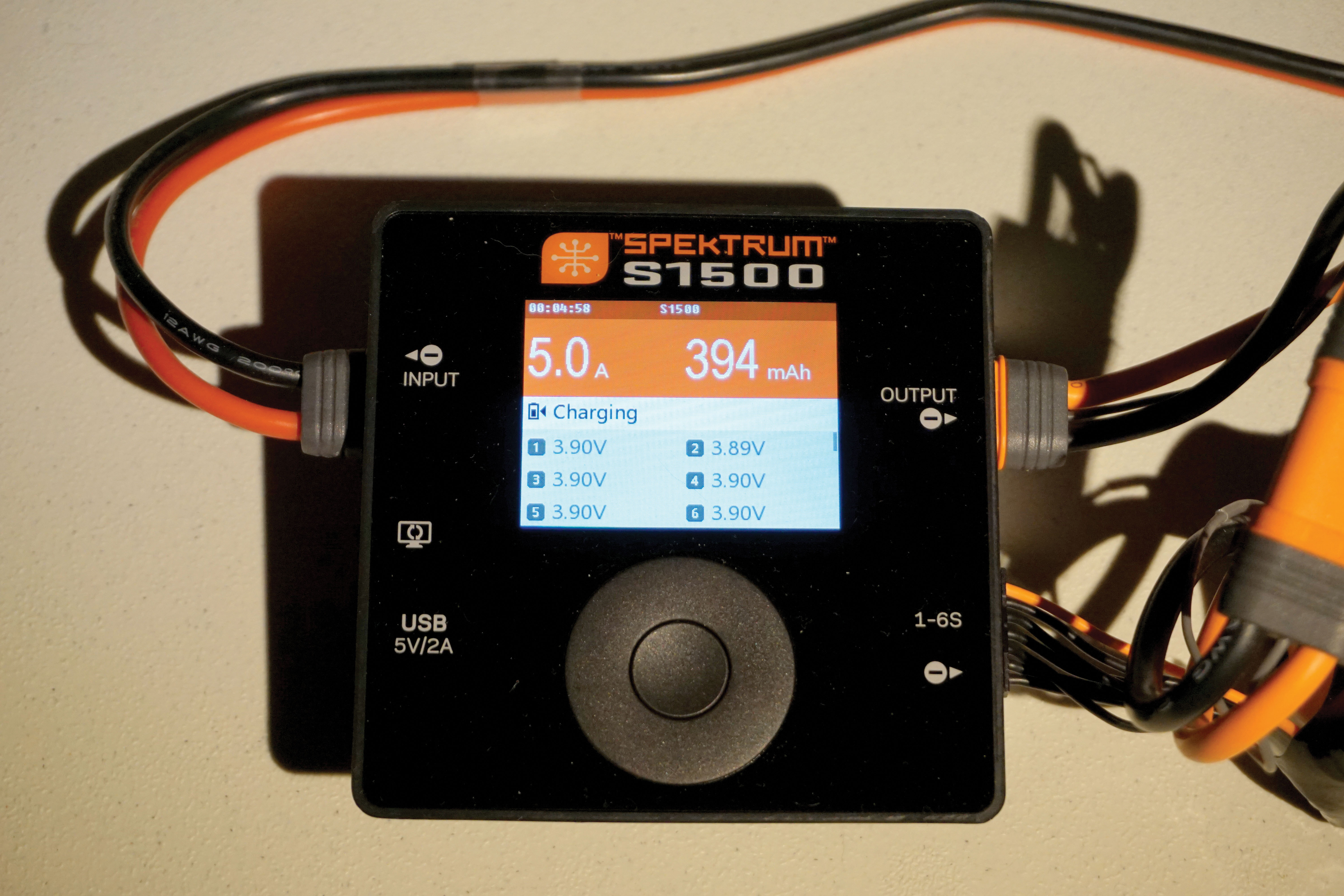
S1500 DC Smart Charger
I selected the S1500 Smart Charger because it was the most powerful charger at 500 watts, and I wanted the ability to charge my 6S 5,000 mAh batteries at 1C or above. It is important to point out that although the charger is marketed to quickly charge large, high-capacity, high-cell-count batteries, an adapter to connect batteries with IC5 or EC5 connectors is not included and needs to be purchased separately (Adapter: IC3 Battery/IC5 Device SPMXCA507).
Included in the box you will find the Spektrum S1500 DC Smart charger, an IC3/banana power supply cable, and a product manual. This DC-only charger allows it to provide a higher wattage, so to use the charger you will also need a power supply.
This capable charger takes up a small footprint and incorporates the balance and battery connections directly on the side of the unit; no banana plugs or balance boards are used.Navigating the charger is done using the scroll wheel that is similar to an iPod for those who are familiar. It works reasonably well but is not as smooth as an iPod. Slide your finger clockwise around the touch menu scroll wheel to scroll down a menu list. Slide your finger counterclockwise to scroll up a menu list. Press and release the menu button to select a menu item. While on the home screen, a short press of the menu button enters the task settings, and a long press enters the system settings.
When connecting a battery, the options are Charge, Discharge, and Storage. Based upon the information provided by the battery, either from the balance port or the Spektrum Smart technology, the charger will set the basic parameters for the battery that is connected. The user can easily edit or change those settings. As an example, when charging my 6S 5,000 mAh LiPo battery, I set the charge rate at 1C.
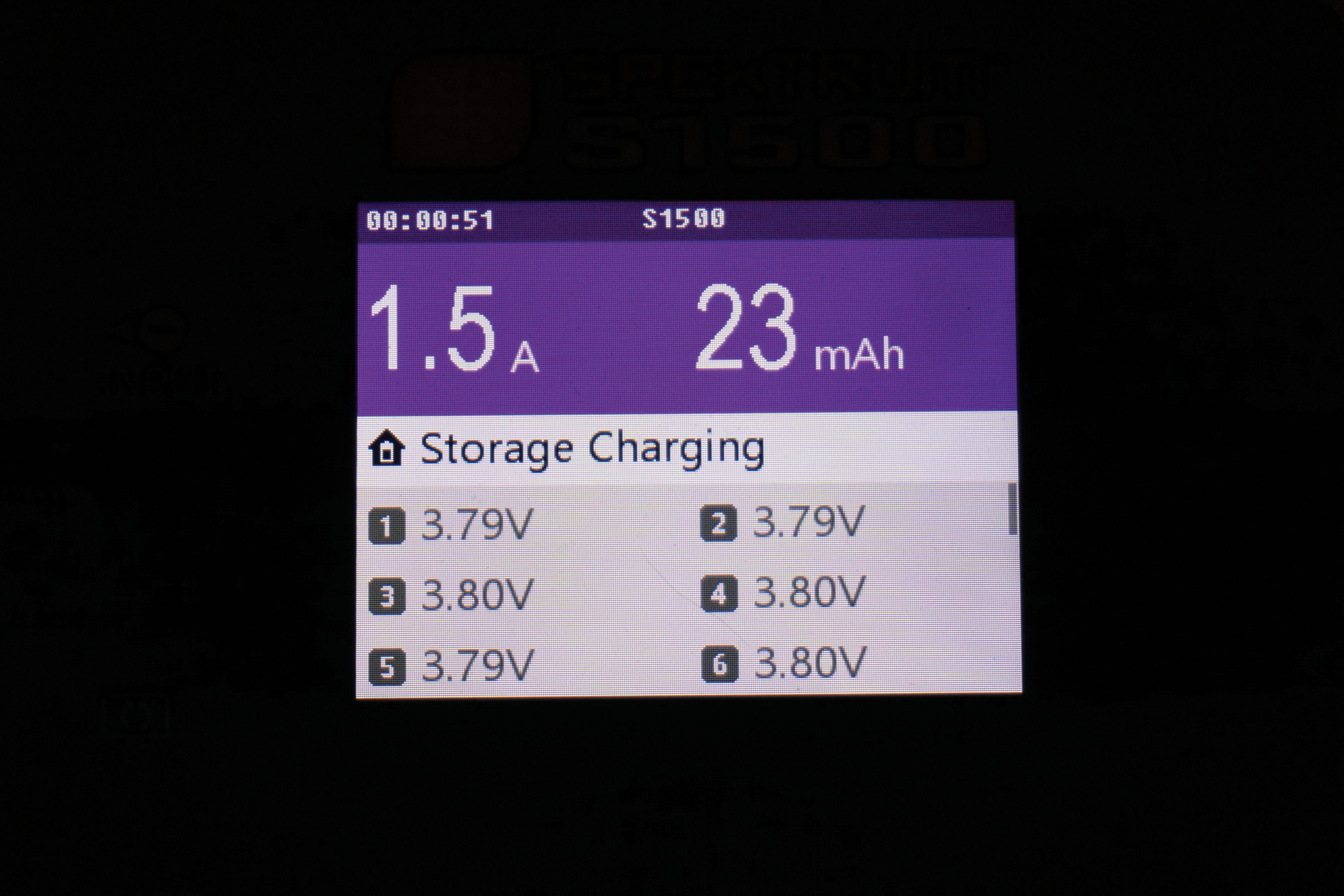

The System Settings menu provides the ability to tailor some options, such as Backlight (automatic, low, medium, or high), Volume (off, low, middle, or high), Touch Sensitivity (set as low or high), and Completion Tone (select single tone or repeating). You also have the ability to select a language.
I have used the S1500 charger with a few different batteries, including those made by other manufacturers, without issue. The charger was even able to balance a 6S pack that had three cells lower than the rest because I had used a lighting system. This was after another charger was unable to bring all of the cells into balance.
The S1500 charger packs several useful features, including a USB port, software update port, safety timer, protection against heat, reverse polarity, short circuit, over-current, and low-input voltage. When combined with a Spektrum Smart battery, this charger really shines by providing much more data than is typically available with a conventional charger.
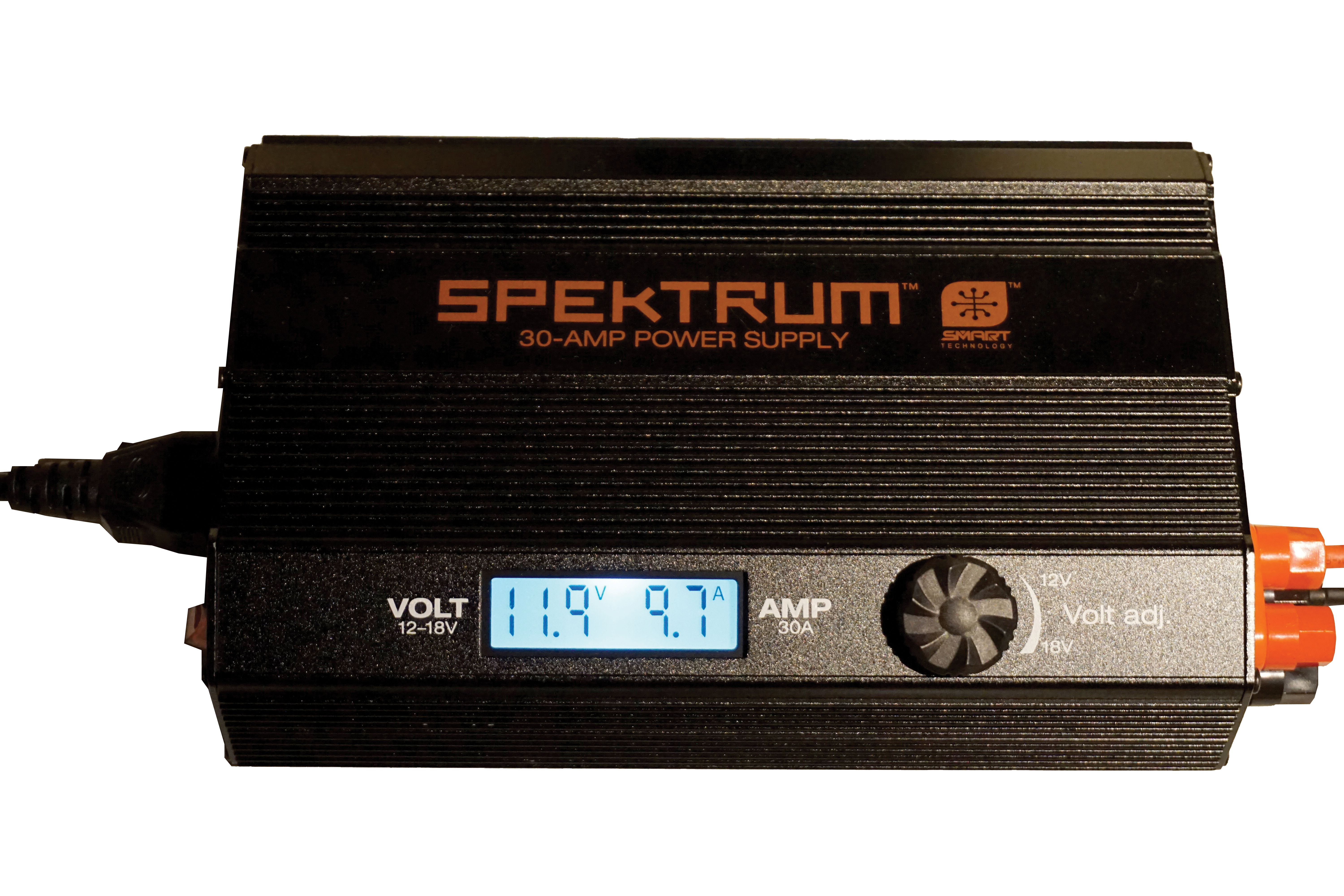
Smart 30-Amp Power Supply
The Spektrum SPMXC10201 power supply connects to a 100- to 240-volt AC outlet and provides consistent DC power at 12 to 18 volts for chargers at up to 30 amps continuous (up to 540 watts).
The power supply has two main output ports that power dual DC chargers. It also incorporates two 5-volt USB ports. A dial on the front controls the adjustable power output from 12 to 18 volts. The LCD display clearly indicates output voltage and current, making the adjustment precise.
I appreciate that the power supply incorporates a power switch and the all-metal design promotes rapid cooling. The fan only needs to run occasionally. For safety, the power supply features protection against over-temperature, overloading, and short circuits.
The Smart 30A Power Supply pairs nicely with the Spektrum Smart Charger and I will likely be adding a second smart charger when flying season begins.
XBC100 Smart Battery Checker
The XBC100 works much like other battery checkers when using non-smart batteries. Connecting a Smart Battery really unlocks its potential by offering a simple-to-use battery checker that provides all of the integrated parameters such as over-discharge and overheating. Smart Battery settings such as auto-storage timer and preset charge current can also be adjusted.
After unboxing the cell checker and installing the included screen protector and lanyard, I read the included manual. I was curious about the proper way to connect the balance plug on a non-smart battery to the checker and observe proper polarity. To my surprise, no illustration or information is provided beyond using the balance connector when connecting a conventional LiPo battery to the XBC100. Connecting the main (non-Smart Battery) connector to the battery checker will display the full pack voltage.
When plugging in the balance plug on the left side of the cell checker, you will want the red wire facing down. The balance plug should be connected at the top of the balance port closest to the IC3 connector. My first attempt had the plug inserted the correct way, but I connected it to the bottom part of the balance port on the checker. There was no ill effect other than the checker not working properly until I moved my connection to the top of the port.
When connecting a Spektrum Smart Battery, you will use the IC3 main battery connector. If you are using larger cell-count batteries that have the IC5 connector, you will need to purchase an adapter to connect the battery (adapter: IC3 battery/IC5 device SPMXCA507).
Press and hold the menu button when connecting a Smart Battery to the battery checker to enter the system settings for the battery. Smart Battery menu options include Auto Storage, which defines how long the battery waits before initiating the auto-storage function. Storage Voltage defines the storage voltage that the battery will set for auto storage. Charge Voltage defines the maximum allowable voltage. Exception Record allows you to check the record of over-charge, over-discharge, and over-temperature. Back exits the menu.
Integrated Servo Tester
A handy feature that is built into the XBC100 Smart Battery Checker is a helpful PWM-out port that is facilitated to be used as a servo tester. This allows you to check control ranges on any modern servo or ESC. Users can test for binding and current draw right from the checker; no special inline meter is required.
After you have connected your servo, simply select Auto CW/CCW. This option is used to cycle the servo, which sweeps back and forth through the full servo travel. As it goes through the full range of motion, watch the LED screen to monitor the current. You can also manually adjust the servos output if you desire.
Qualcomm 3.0 USB Charge Port
Although this feature is unlikely to be used often in a home setting, it can be quite helpful when you are at the field without easy access to electricity. Just plug in a charged battery and hit start USB Charging. The XBC100 becomes a fast-charging power bank ready to keep your Spektrum Smart transmitter and mobile devices charged. It supports Qualcomm QC 2.0/3.0 and is compatible with BC1.2 and Apple devices. The maximum output is 12 volts/2 amps.
The Spektrum XBC100 Smart Battery Checker and Servo Driver packs a lot of useful features into this small device. Like all of the Spektrum Smart products, the checker provides a lot of functionality, but connecting a Smart battery is when it really shines.
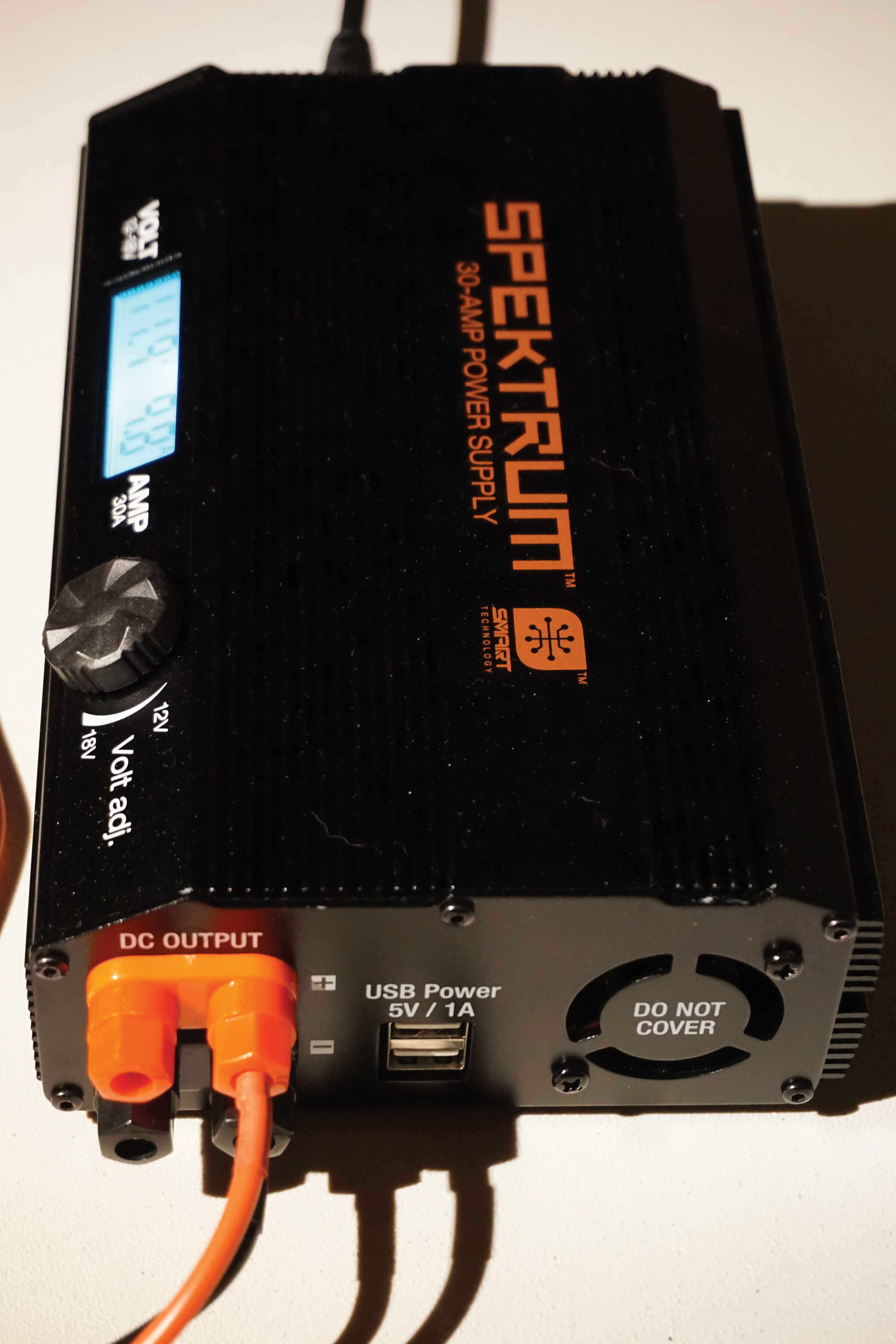










1 comments
Spektrum Smart Technology Cables
Add new comment